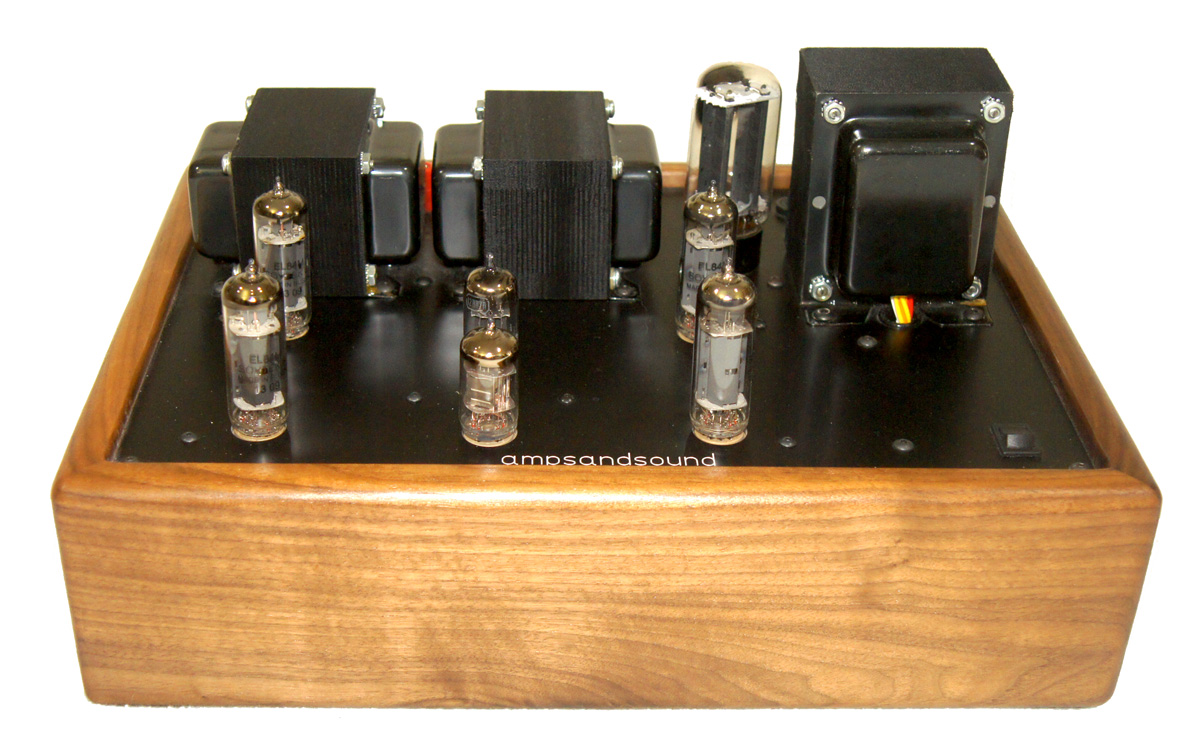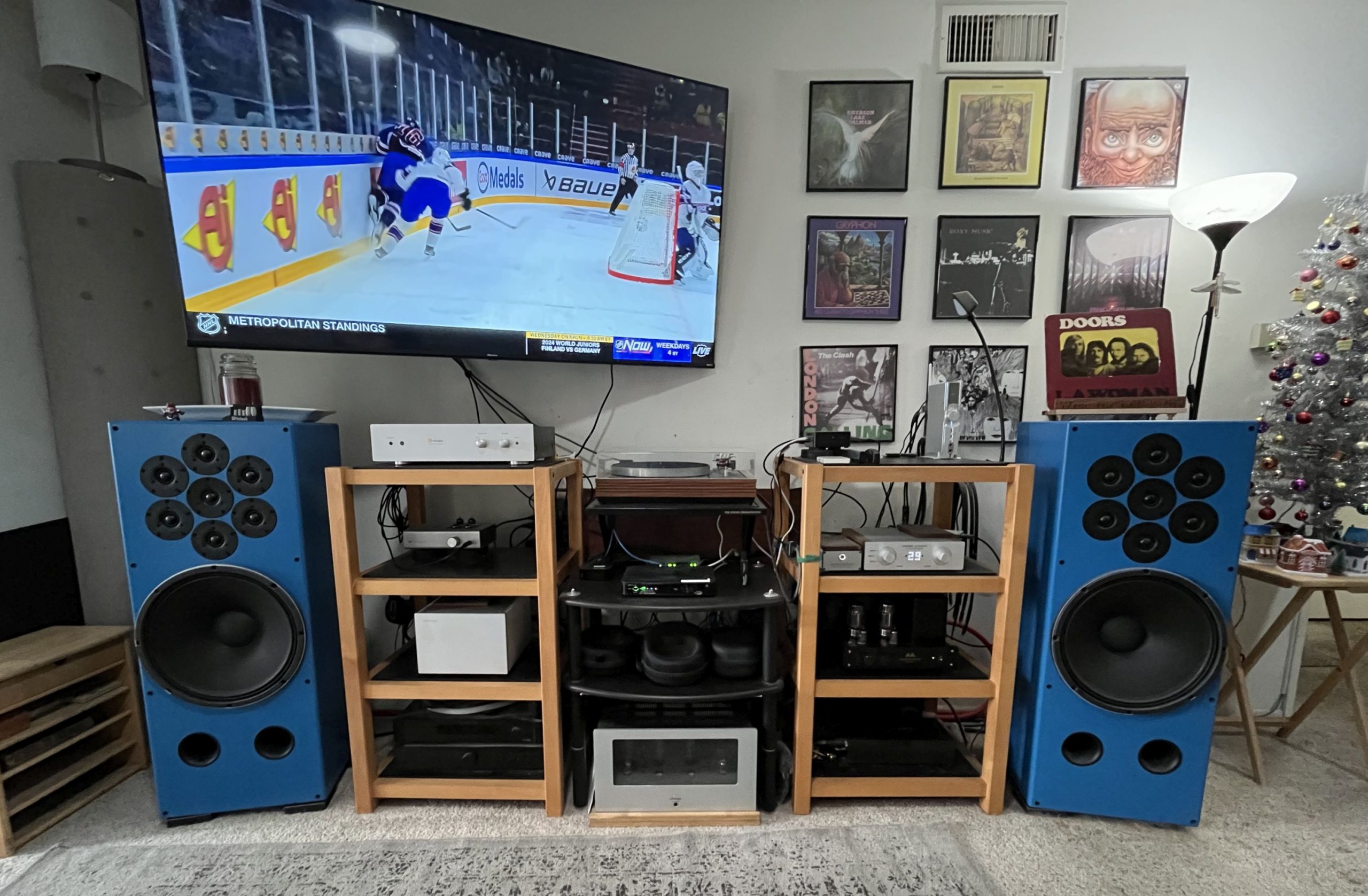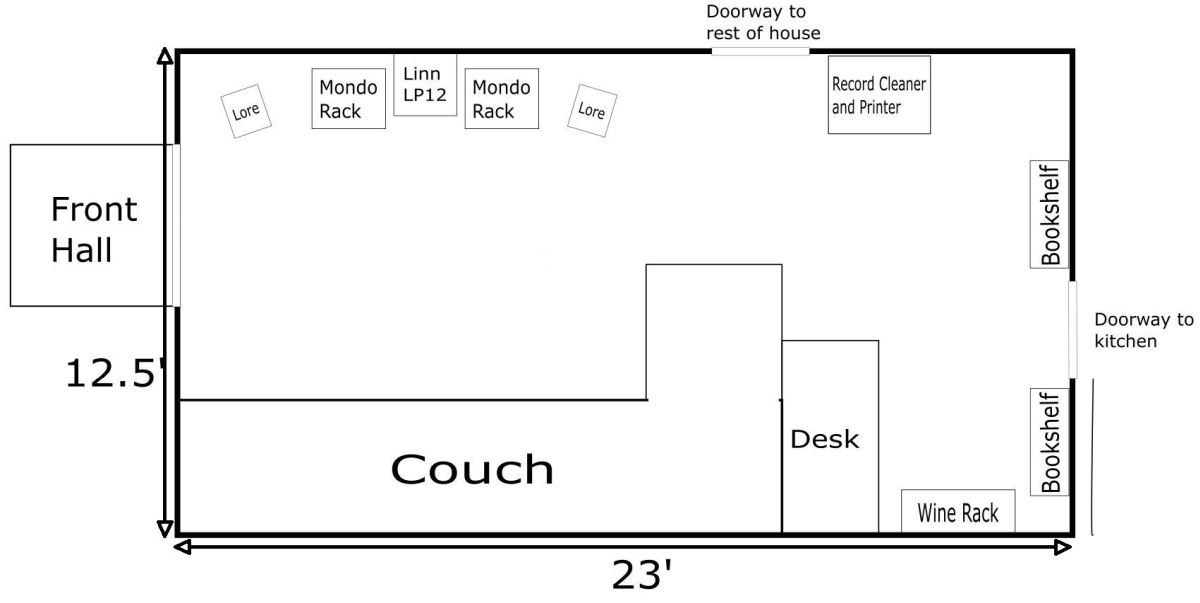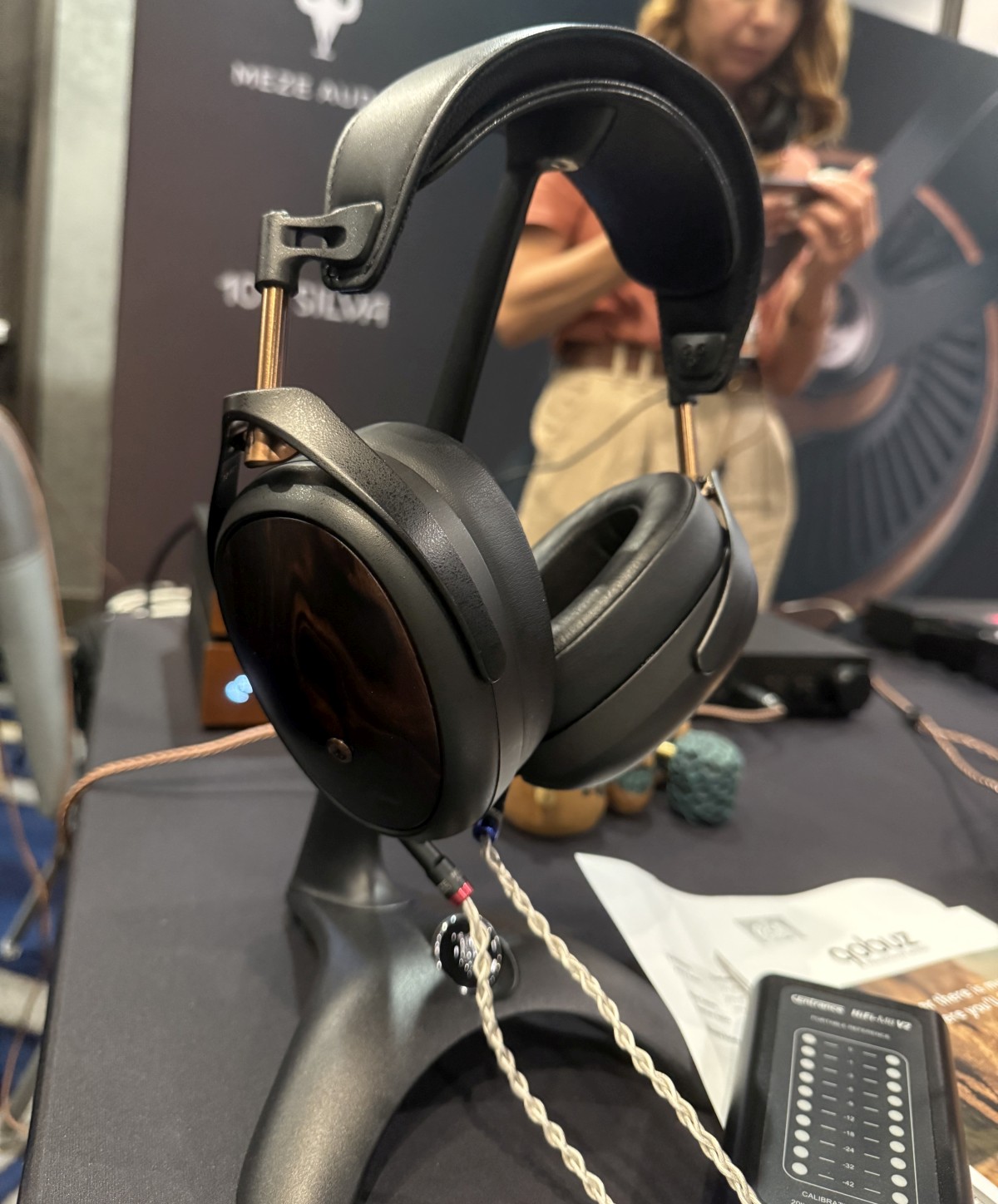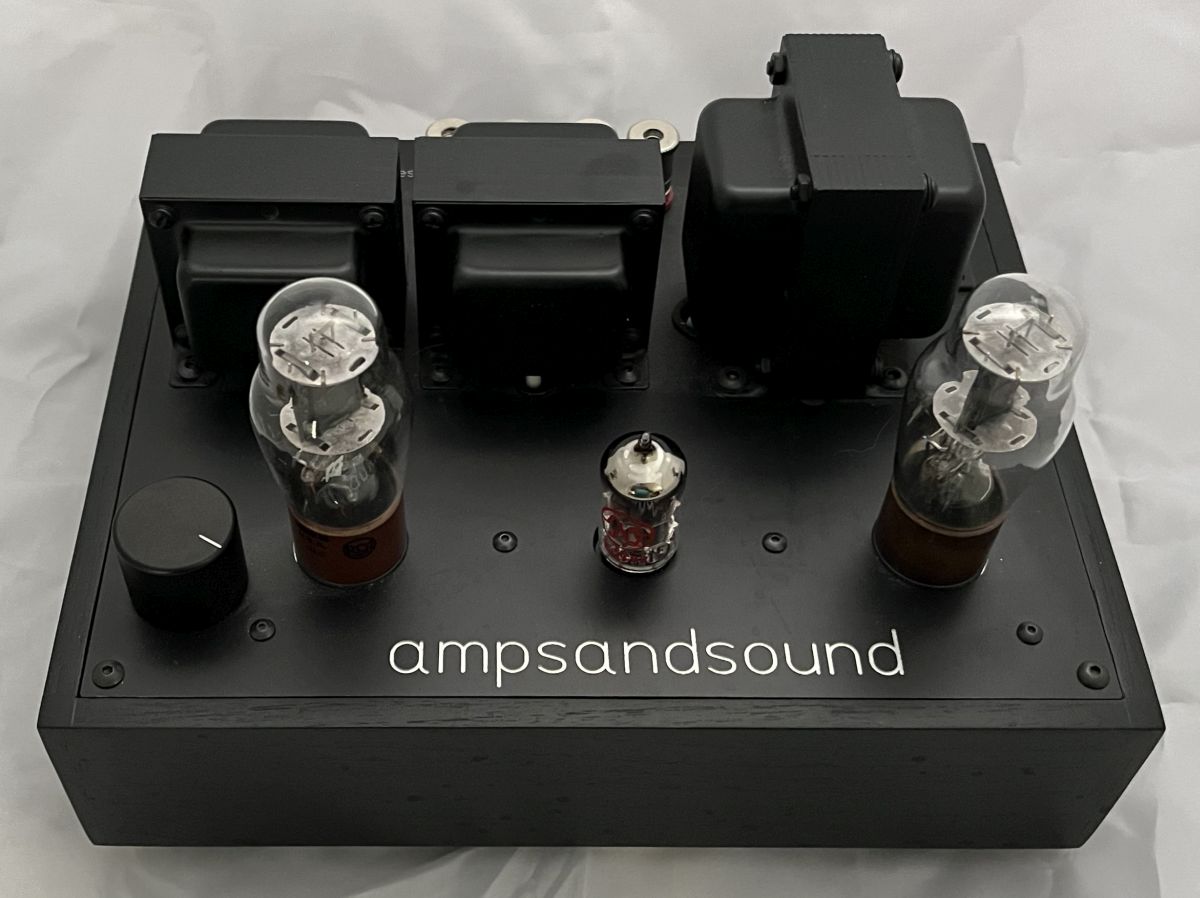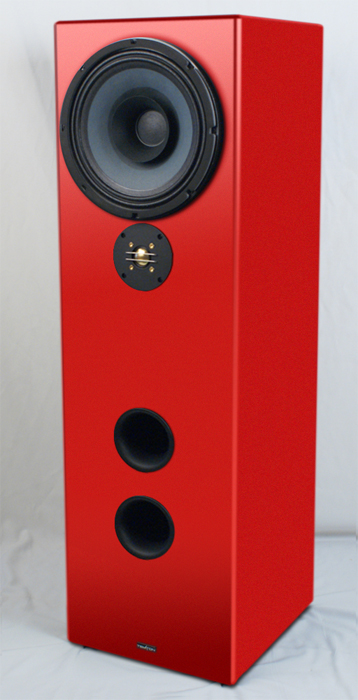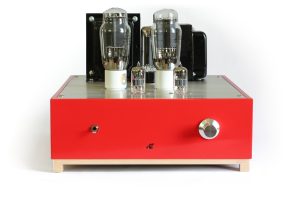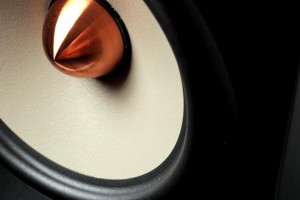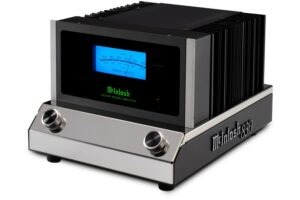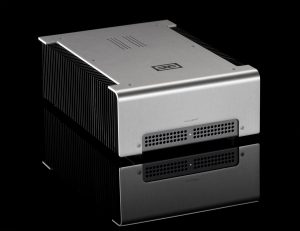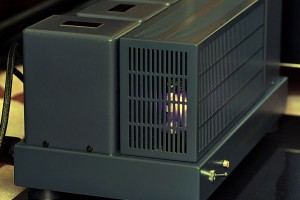I've been interested in high-end audio since the mid 1970s, maybe even before that, certainly before anyone used the term High End Audio. This was mostly due to my love for music, and happening to have a few school friends and acquaintances who parents had really good systems. It wasn't until I was in college (starting in 1975) that I actually walked into a real high-end audio dealership. What struck me then, was how often the salesmen in the shops talked about how many of the manufacturers were really one or two guys building gear in their kitchen or garage. This was usually part of an explanation about how dedicated these guys were, how they weren't supporting a building full of employees or spending large amounts on marketing or PR. The line was usually that all the money went into R&D, and building the best product possible for the price. Of course, if the product mentioned was at another dealership, the comments about small one or two person operations weren't always so positive.
However, ever since then, I found many of the products I've really liked, one way or another, came from either one of these small businesses (often started as a hobby) or from companies that at least started that way, and grew to a larger size afterwards. Unlike some people I know who look for comfort in large companies, or fall for big advertising campaigns, I've often been willing to seek out the little guy, the tinkerer or maybe just the new guy.
And boy, does the Internet, non-existent in the good old days, make finding these small companies much easier.
And so it was through chance and circumstance (and Facebook) that I discovered ampandsound (like conrad-johnson, it apparently isn't capitalized, though they aren't totally consistent with that on their website). I found that ampsandsound founder Justin Weber and I shared several friends on Facebook, and seemed to be on the same side of a lot of non-audio related discussions. I then saw he posted photos of some very sweet looking tube amps, and after checking his Facebook page, realized that he was the builder.
Shortly after that, at THE Show Newport this past spring, visiting the Chapman Audio room, I saw that Chapman's new T-5 Custom Tribute Edition ($7495) speakers were driven by Weber's $2800-the-pair Casablanca power amps. I've always liked the sound Chapman produces at shows, but this was maybe the best I had ever heard them. Justin and I chatted, and after looking over his line, I asked if I could review the Stereo 15 Special Edition.
The Stereo 15 Special Edition (there doesn't seem to be a regular edition) is a basic two channel stereo power amp, running a pair of EL84 tubes per channel in a push-pull, ultra linear configuration, based on "the famous Hafler circuit with cathode bias allowing for trouble free operation" (quoted from their web site). It also uses one 12AX7 and one 12BH7 (1/2 per channel) and is the first tube rectified amp I've ever tried. My review sample was sent with both a 5U4 and a 5AR4, which I swapped out a few times. As indicated in the name, the amplifier puts out a rated 15 watts per channel, the same rated output as my Antique Sound Labs MG-SI15DT-S (KT88 based single ended). It has two taps for speakers, one specified for 8 ohms, the other can be ordered for either 4 or 16 ohms. My review sample was for 8 and 16 ohms.
The basic design of the amp is based on older style "plate amplifiers" where everything is mounted to either the top or bottom of a single steel plate, which can then be simply attached to a wood case. Personally, I really like this design, and find having the RCA inputs and the speaker binding posts on top rather than in back much easier to work with when the amp sits on a shelf in my equipment rack. Fit and finish, build quality and cosmetics are all up to very high standards, but without any unnecessary bling factor. It has a purposeful, if somewhat old-fashioned look about it, that at least for me, gives an impression that the money went into the components and important parts, not some high-end luxury product marketing scheme.
I used the Stereo 15 SE in my system, primarily between my DIY passive attenuator/switcher (about $90 in parts, built by a friend who really isn't interested in building any more of them) and my Tekton Lore speakers. I also used a pair of Fritz Speakers LS-Fritzies (small stand-mounted two-way coaxial design). The Tektons are rated at 98dB and an easy 8 ohm load, so power was not an issue. The LS-Fritzies are specified at 88.5dB and 8 ohms, but seemed to mate up beautifully with this amp, also. Maybe I just don't play too loudly. Speaker cables were mostly Vermouth Audio Red Velvet, with a little time spent with Morrow Audio SP4. You can check the rest of my system out by clicking on my name at the top of this article.
I had never had an EL84 based amp in my system before, but I have heard other EL84 amps in friends' systems many times. I've generally admired the midrange tone, transparency and large soundstage that EL84s can produce, though have generally felt that I prefer the bass character of KT88 amplifiers. It's not that I haven't heard excellent bass from EL84s, just that KT88s seem to have a bit more low frequency punch and power. That basic view carried through with this amplifier too.
Starting off with my favorite LP of the past year, Samantha Crain's Under Branch & Thorn & Tree (Ramseur Records ARAM 19842, 200 gram) I was bowled over by just how beautiful her voice sounded. This is an exceptionally good record from every aspect (song writing, performance and sound quality) especially if you like her folk / blues / Americana / country / traditional singer-songwriter style. With the Stereo 15 SE, through either speaker set, though more so with the LS-Fritzies, every drop of emotion, feeling and meaning came through and filled not just my room, but my heart and soul. This was absolutely gorgeous. Not syrupy or colored or soft, just full of real sound, detail, tone and whatever else they managed to scribe into those grooves.
Since I reviewed the ModWright KWI200 integrated amp (issue 64), I've become somewhat fixated on noise (and its reduction) in my system. I'm not just referring to the obvious hums, buzzes, and other background hash that you can easily hear in so many systems, but equally the behind the scenes, subtle, not really sure it's there until it's been removed type of noise. This is an area where it seems solid state amps usually have an advantage over tube designs. In the case of the Stereo 15 SE, it is clear that low noise was a definite design goal, and one that was admirably achieved. As much as I love my Antique Sound Labs amp, and as quiet as it is (no hum, no tube noise) there is still something filling up the space between the notes, something I can't really describe, but whatever it is, is wasn't there when the Stereo 15 SE was in the system. In fact, the Stereo 15 Se might be the quietest, most transparent, background free tube amp I've tried. This is a very important issue with a low powered amp that is designed primarily to be used with high efficiency speakers.
This level of noise free reproduction made listening to complex music much more enjoyable. I listened to all sorts of progressive jazz and rock albums (LP, CD rips and Hi Res files), where odd tuning, time changes, and interesting varieties of instruments made listening very intently a requirement. I was able to hear much farther into the mix, separate out individual lines, and really tell what was happening musically. It was a treat listening to old favorites, and I pulled out many of my old ELP, Yes, King Crimson, and Gentle Giant LPs (most purchased way back in the 1970s). There is so much going on in these old albums, that any defect or limitation in the playback chain can easily obscure important musical cues. With the Stereo 15 SE, all these albums played beautifully, and nothing seemed hidden or obscured compared to what I've heard from other amps.
One note, not musically relevant, but a "sound" based tidbit, in King Crimson's LP Islands, in the opening of "Formentera Lady," right before the flute starts playing, there is a little squeak. As my system improved over the years, it became obvious that this is the wooden chair the flutist (assuming Mel Collins) is sitting on, as he either stands up or at least adjusted his seating position. I've never heard it so clearly defined with my current speakers, as I do with the Stereo 15 SE. Odd, but they apparently edited this squeak out in the high resolution digital releases, as I do not hear it on the 24/96 file I have on my server.
Day after day of listening to not just my favorites, but a wide variety of tracks offered up by playing the server on shuffle, showed me that whatever music played, be it rock, classical, jazz, or any of the weird shit I collect, the same characteristics shone through. Music coming through a dead silent background, with a pristine and beautiful tonality throughout the midrange. Vocals were especially well delivered. With frequencies as high up as were on the recording, and within the limits of my speaker's abilities or my ears to hear, there was all the clarity, airiness and transparency I could want or expect. There was plenty of ambiance within a large well defined, but naturally non-overly specific soundstage.
Overall, the sound may have tended a little toward the traditional "tube" sound, but mostly from the positive aspects of richness, density, and fullness, rather than from a coloration or "pleasing distortion" sense that some claim tubes induce. There was natural beauty more than heavy commentary.
Again, the only real issue I had with the amp, and only in direct comparison to my long time reference (the Antique Sound Labs MG-SI15DT-S) was that with both the Tekton Lores and the Frits LS-Fritzies, there was a slight loss of bass power. This was noticeable mostly due to the type of music I listen to, being heavy on the prog rock, prog jazz, and electric bass guitar heavy genres. Do understand the bass quality from the Stereo15 Se was extremely tuneful, well defined and very went down very deep, but it just lacked a little of that grunt and drive that I think is just part of the KT88 experience.
I am not much of a tube roller. In all the years I've had my ASL amp, I've only tried other tubes in it a couple of times. I remember discussing tube rolling with the designer at CES years ago, and he seemed pretty clear on staying with the specified Valve Art KT88 and EI or JJ 12AX7. But with the Stereo 15SE, I got to try some tube changes that I had never encountered before. Since the amp is tube rectified, my review unit was supplied with both 5AR4 and 5U4 rectifiers, I tried alternating between them. The differences were not what I had expected, but were clear and consistent. The 5AR4 sounded a little more traditionally "tube beautiful" with slightly colored but beautiful tone, while the 5U4 was just more neutral, and noticeably more dynamic and powerful sounding. I settled on and stayed with the 5U4 for most of my time with the amp.
I could go on an on about this amp, but suffice it to say that the idea of a reasonably priced, locally manufactured, beautifully built and gorgeous sounding tube amp is something to be enthusiastic and excited about. Match it up to compatible speakers, a really clean, noise free front end, and get lost in the music. Kudos Mr. Weber.
But wait, there's more! The ampsandsound "secret" Chip Amp
For those who are looking for a low power (25 wpc) amp and don't want or need to have tubes in their system, or simply are looking for an excellent amplifier for well under one-thousand dollars, ampsandsound offers what they simply refer to as their Chip Amp. It doesn't show up on their web site, and they don't advertise it. Kind of like In&Out Burger's not-so-secret "secret" menu, this amp is akin to ordering animal style fries. You simply have to know to ask for it.
By its not so clever theoretically non-existent name, it is obviously a chip amp. Based on an LM-1875 chip, it is not really a "gainclone" based on the 47 Labs Gaincard amp, though it does share much of the minimalist design of that amp. It does use a larger power supply than the standard gainclone and hides in a very basic generic looking (though nicely finished) metal case. It's not designed to show off or be a piece of eye candy. It is designed to be a good sounding, simple, reliable, inexpensive amp.
And for that reason, a lot of audiophiles will probably ignore it.
But that would be their loss. As with all low powered chip amps, finding appropriate speakers is essential. As with the Stereo 15 SE, I used both the Tekton Lore and the Fritz LS-Fritzies for the review, and also let the amp spend some time in a friend's system that uses custom Zu Audio speakers, replacing his Almarro single ended amp. I know it's never good to generalize or stereotype, but let's face it, different topologies or technologies often tend to have certain characteristic sounds. That's why some people prefer tube amps, some prefer Class A solid State amps, some prefer MOSFETS, some prefer single-ended, and the list goes on and on. From what I've head over the years (and this is the third chip amp I've had in my system) chip amps using the LM1875, LM3875, or LM3886 series also tend to have a few consistent characteristics.
One characteristic is a lengthy warm up period. Listened to right after powering up, the sound is thin, gritty, and not very pleasant. Things start to get better after about 30 minutes of warm up, but realistically, this amp should be left on all the time. That has been true of the other chip amps I've tried, also. The original 47 Labs Gaincard I reviewed way back in PF Issue 1 (HERE) was quite forgettable for the first twelve hours or so, then slowly got better until it had been on for about twenty four hours. After which it was one the best sounding amps I ever tried. That was also true for the Clones Audio 25i (a beautiful sounding amp, too).
As heard in this particular amp, those characteristics were a pristine clarity across the board, with no single area highlighted and accentuated. It doesn't sound much like a tube amp, lacking the bloom and palpability in the soundstage that good tube amps create. Nor does it sound like a conventional solid state amp, possessing more body and atmosphere than I've heard from most solid state amps. It certainly lacks the graininess I hear from my B&K ST-140 in the higher frequencies, and is also more dynamic than that amp, in spite of being rated at about one quarter the power (25 watts versus 105), at least when used with speakers that don't need much power.
I did try the amp with a speaker that wasn't compatible. The ELAC Debut F5 speaker, with 85dB rated sensitivity and 6-ohm nominal load, was not a happy combination. Transistor radio-like, was what ran through my mind. Again, pick your speakers with care.
But here's the deal. I think a lot of audiophiles tend to correlate expectations to what they see or assume about a technology. That's why small electronics get referred to as "good for desktop systems" as if just because they are physically small they can't fit in a full size, room filling system. Or more importantly, if they don't see the bling, glitter and high price of a real "high end" product, there's an assumption that it probably can't be very good. That's the beauty of an amp like this. For $600, you can mate this up to a $49 Schiit audio SYS, a Channel Islands Audio VPC•3 Passive Controller ($299), or like me a DIY passive line stage that cost about $90 in parts, and have absolutely killer sound for under a grand. Audio on a budget? Consider this:
Schiit Modi2 Uber DAC $149
Schiit SYS passive line switcher/volume control $49
ampsandsound chip amp $600
Tekton M-Lore speakers $650
Then add your existing PC with your music library and for under $1500 you'll have killer sound. For an additional $350 you could move up to the Lore and totally rock out.
The thing is, the amp is good enough that you wouldn't need to worry about upgrading it for a long time, if ever. I could seriously live with this amp.
And that's something a lot of people should consider.
ampsandsound
Stereo 15 Special Edition
$1,800 with tube set
Chip amp
$600 (special order only)




